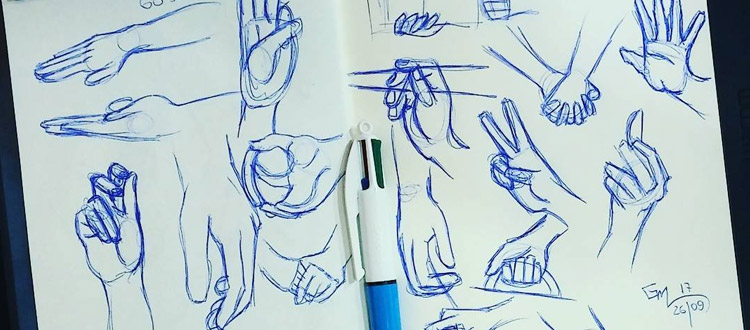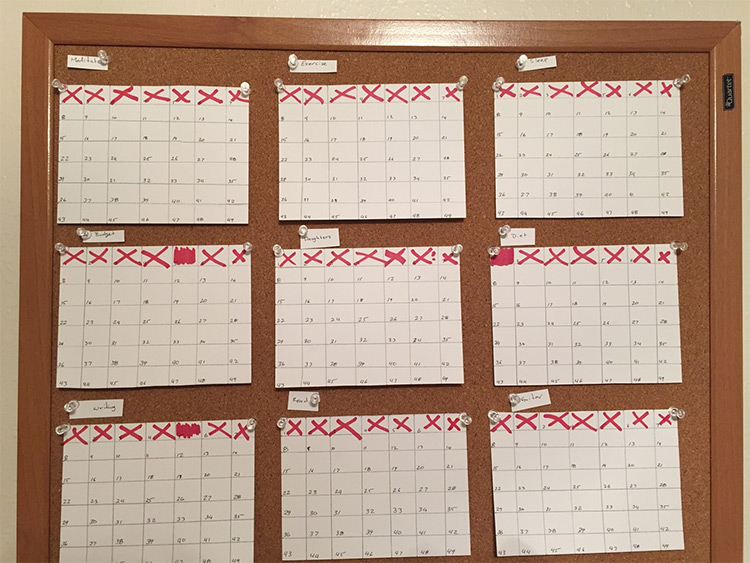
How To Build A Habit of Sketching Daily
To become a skilled artist you need to put in the work every day and keep it up for years. Professionals eventually learn how to critique their own work and focus on their weaker areas to improve. But how does a beginner learn to see their own mistakes?
The best way to reach this level is with daily practice. So how do you set yourself up with that type of daily schedule? Repetition is a big factor but mindset also plays a role.
I’d like to share some advice on how you can force yourself into a daily drawing habit. It will take weeks before you feel like you’ve made a consistent habit. But once you do it’ll make drawing so much easier and a lot more relaxing.
Planning a Schedule
You should start by setting aside a time to draw every day. This might be 30 minutes or it might be 4 hours(or more).
The point is to stick with this time every single day to never avoid drawing.
You might have some days where you can’t make the time because of an unforeseen circumstance. If that’s the case just move your drawing to the next day. Or tack on extra time throughout the week to make up for lost drawing hours.
The point of working with a rigid schedule is that it keeps you honest. Every day you’ll be working towards building a subconscious routine that just sorta happens whether you’re thinking about it or not.
If you’re lacking in willpower I would recommend the X effect as a study aide. You mark a notecard with a 7×7 grid counting 49 boxes. Each box represents one day.

For each day that you complete your drawing time you mark an X in that box. The idea is that if you can do 49 days consistently then you’ll end up with a habit that you don’t want to break.
From there it’ll get easier to draw every day because it’s just what you do.
I can’t stress enough the importance of getting on a schedule. It is possible to just draw whenever you have free time. But that sort of loosey-goosey scheduling isn’t how you build consistent year-over-year progress.
Organize Your Lessons
It really doesn’t matter what you’re drawing in the beginning. If you never had much practice drawing as a child then you’re likely pretty bad. And that’s totally fine!
The benefit of being a newbie is that you can draw pretty much anything and improve. If you drew lines for 30 minutes a day you’d see your line work improve. But at some point you will need to actually start focusing your drawing efforts and trying to practice certain skills.
Beginners rarely know where to start. This is why it’s so difficult to jump right into drawing because there’s so much to learn and there’s no specific direction to walk.
To handle this just organize a small lesson plan that fits into the time you have. If you’re only drawing for 1 hour each day then you might do a breakdown of 30min gesture and 30min shape drawing.
When first getting started you need to put the most effort into your fundamentals. It’s fine to make time for fun drawing. But this isn’t real focused practice and won’t yield the quickest rate of growth.
Make yourself a lesson plan that moves between different topics. Practice perspective for a few months and then move onto value or anatomy. Switch between different subjects so that you give yourself a well rounded art education.
Carry Your Own Sketchbook
Every professional artist has a sketchbook and knows how to use it. This is a big part of being an artist as you can go out into the real world and draw real stuff.
You can find helpful guides online that teach you the basics of drawing in a sketchbook. But it’s ultimately just a way to loosen up and draw away from the computer. This is especially useful for concept artists who plan to work digitally.
The Moleskine sketchbooks tend to be the most popular and they’re super easy to carry with you. All you need is any drawing utensil(pencil or pen) and some free time. The sketchbooks are lightweight and easy to handle in any climate.
But look into our guide on choosing the best sketchbook to find one that works for your goals.
Whenever you’re on a trip that might break your typical routine the sketchbook can keep you on task. Even 15 mins of drawing is better than nothing. You just want to keep yourself in that mindset of putting pencil to paper every single day.
Treat this little sketchbook as your scrapbook for new ideas. Be willing to try stuff and don’t feel like anything in your sketchbook is finished work. You never have to show anybody your drawings and they’re really for you to practice freely without limitations or judgement.
I recently stumbled onto this post talking about the basics of teaching yourself to draw. There’s a recommended schedule of drawing 5 hours per day: 2 in the morning, 1 at lunch and 2 in the evening.
Not everyone will have time for this but it gives you a solid model to attempt.
Drawing for 5 hours is much better than 1-2 and you’ll see improvements quicker which will then impact your confidence too.
Slowly Increase Drawing Time
If you’re working a fulltime job this will be tough. It’s never easy to make time for something when life is already so damn hectic. But if something’s truly important then you learn to make the time.
It’s possible to see improvements by drawing only 1-2 hours per day. But if you want to see significant improvements you should be aiming for 5-6 hours per day, or more if possible.
Starting anywhere is better than never starting. One hour per day is a better commitment than other novice artists who won’t even get onto a schedule.
But to build your skills to a professional level you’ll need to increase your practice time somehow. Whether this means spending less time in front of the TV, turning down outings with friends, or sacrificing other hobbies, at some point your art education will need to become a priority.
If your schedule is very tight then start slow. Increase half an hour over a few months. This will help you adjust to the new schedule over time. Plus you’ll have lots of time to analyze your schedule and consider which activities can be removed.
Weekdays tend to be very busy so try to make up for that on the weekends. But don’t leave the weekends as your only drawing days because that won’t be enough.
The best way to start is to plan your schedule, organize what you’ll be drawing during that time, and just start. Go for an hour and make sure you can do that for 30-60 days straight. Then slowly increase whenever you have extra time and gauge your progress.
Self-motivation and perseverance will help you get through the early stages. Learning art has little to do with inspiration and everything to do with hard work.
But if you stick with it and get into the habit of drawing every single day then I guarantee you’ll see improvements.











